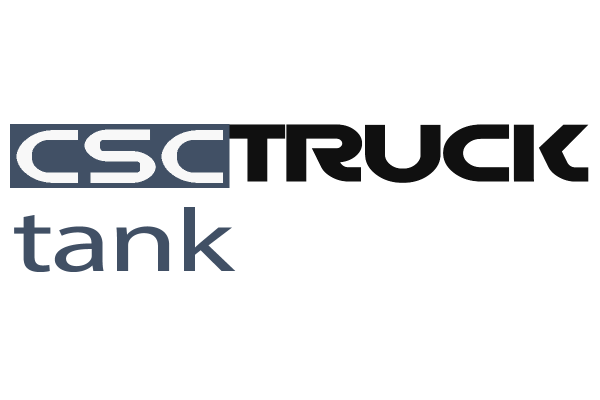Introduction
In the trucking industry, transporting bulk materials efficiently and safely requires specialized equipment. One such piece of equipment is the pneumatic trailer, an essential component in the logistics of dry bulk transportation. Pneumatic trailers are designed to carry a variety of dry bulk commodities such as cement, flour, lime, fly ash, plastic pellets, and more. Their unique construction and functionality make them indispensable in industries such as construction, food processing, and manufacturing. This article explores what pneumatic trailers are, how they work, their types, benefits, and common applications.
Understanding Pneumatic Trailers
A pneumatic trailer, also known as a dry bulk trailer or pneumatic tanker, is a specialized tank truck used for the transportation of dry bulk materials. Unlike standard dump trailers or hopper trailers, pneumatic trailers utilize compressed air to unload the cargo. This makes them ideal for transporting fine powders and granulated materials that cannot be handled using conventional dumping methods.
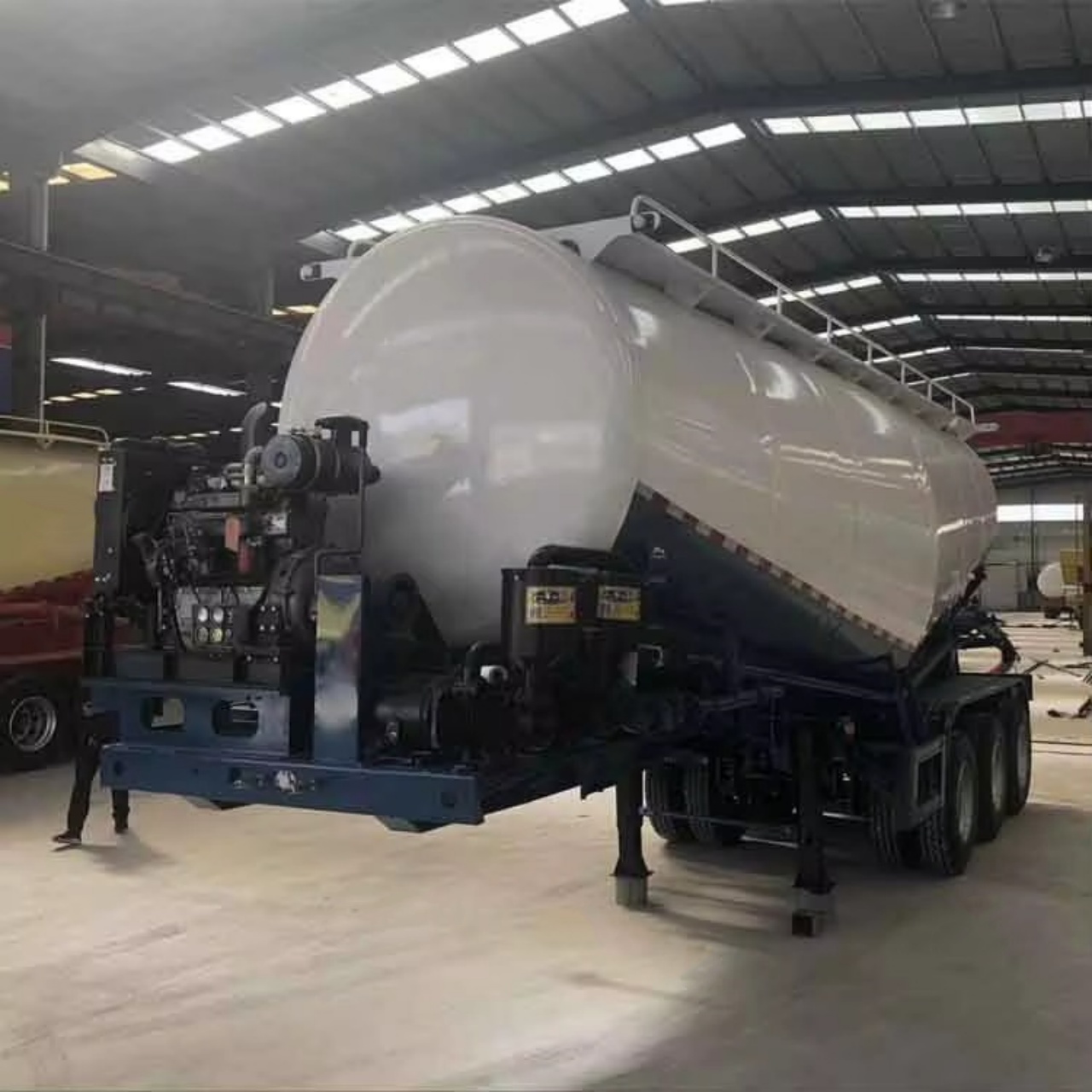
Key Components of a Pneumatic Trailer
A pneumatic trailer is constructed with several essential components, each playing a crucial role in its operation:
- Tank Body – Made from aluminum or stainless steel, the tank body is cylindrical in shape and designed to withstand the pressures involved in pneumatic unloading.
- Air Compressor – This component supplies compressed air to fluidize and push the material out of the trailer.
- Discharge System – The discharge piping and valves help control the flow of material as it exits the trailer.
- Manholes – These access points allow for easy loading and maintenance of the trailer.
- Aerators or Fluidizers – Located at the bottom of the tank, these components help agitate the material, preventing clogging and ensuring smooth discharge.
- Pressure Relief Valves – Safety devices that prevent over-pressurization within the tank.
How Does a Pneumatic Trailer Work?
The working mechanism of a pneumatic trailer is based on the use of compressed air. Here’s how the unloading process typically works:
- Loading the Material: The dry bulk material is loaded into the trailer through manholes on top. The interior of the trailer is divided into multiple compartments to ensure even distribution of the load.
- Sealing the Trailer: Once the material is loaded, the manholes are securely closed to create an airtight environment.
- Air Pressure Activation: When it is time to unload, the onboard or external air compressor is activated. This sends high-pressure air into the tank.
- Material Fluidization: The compressed air enters the aerators or fluidizers, causing the dry bulk material to become semi-fluid, allowing it to move freely.
- Controlled Discharge: The material flows through discharge pipes and is directed to a storage silo, mixing unit, or processing plant as needed.
- Final Cleaning: Once the unloading is complete, residual material is cleared, and the tank is prepared for the next load.
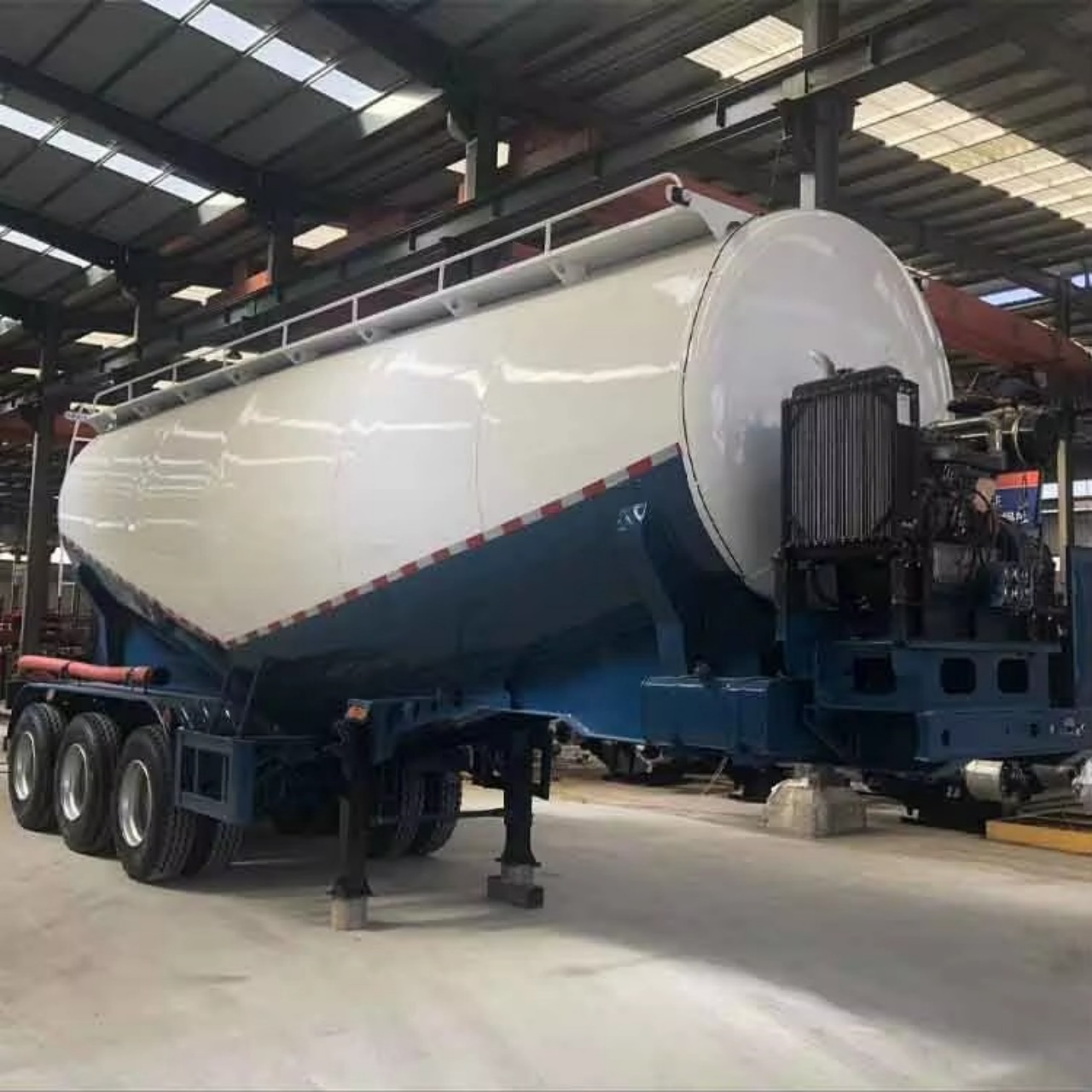
Types of Pneumatic Trailers
There are several types of pneumatic trailers, each designed for specific applications. The most common types include:
1. Straight Hopper Pneumatic Trailer
- Features a straight, smooth interior to facilitate efficient unloading.
- Ideal for materials like sand, lime, and cement.
2. Cone Bottom Pneumatic Trailer
- Has a conical shape at the bottom to help materials flow smoothly.
- Used for products that tend to compact during transport.
3. Vacuum Pneumatic Trailer
- Equipped with a vacuum system to aid in both loading and unloading.
- Suitable for handling ultra-fine powders and materials that are difficult to discharge.
Advantages of Using Pneumatic Trailers
Pneumatic trailers offer several advantages over other bulk transport methods:
- Enhanced Safety: Since unloading is done using air pressure rather than tipping or dumping, there is less risk of accidents or spillage.
- Reduced Contamination: The sealed system prevents moisture, dirt, and foreign particles from contaminating the cargo.
- Efficient Unloading: Compressed air ensures quick and thorough unloading, reducing downtime.
- Versatility: Suitable for a wide range of industries, including construction, agriculture, and food processing.
- Cost-Effective: Minimizes product loss and requires less manual labor compared to other unloading methods.
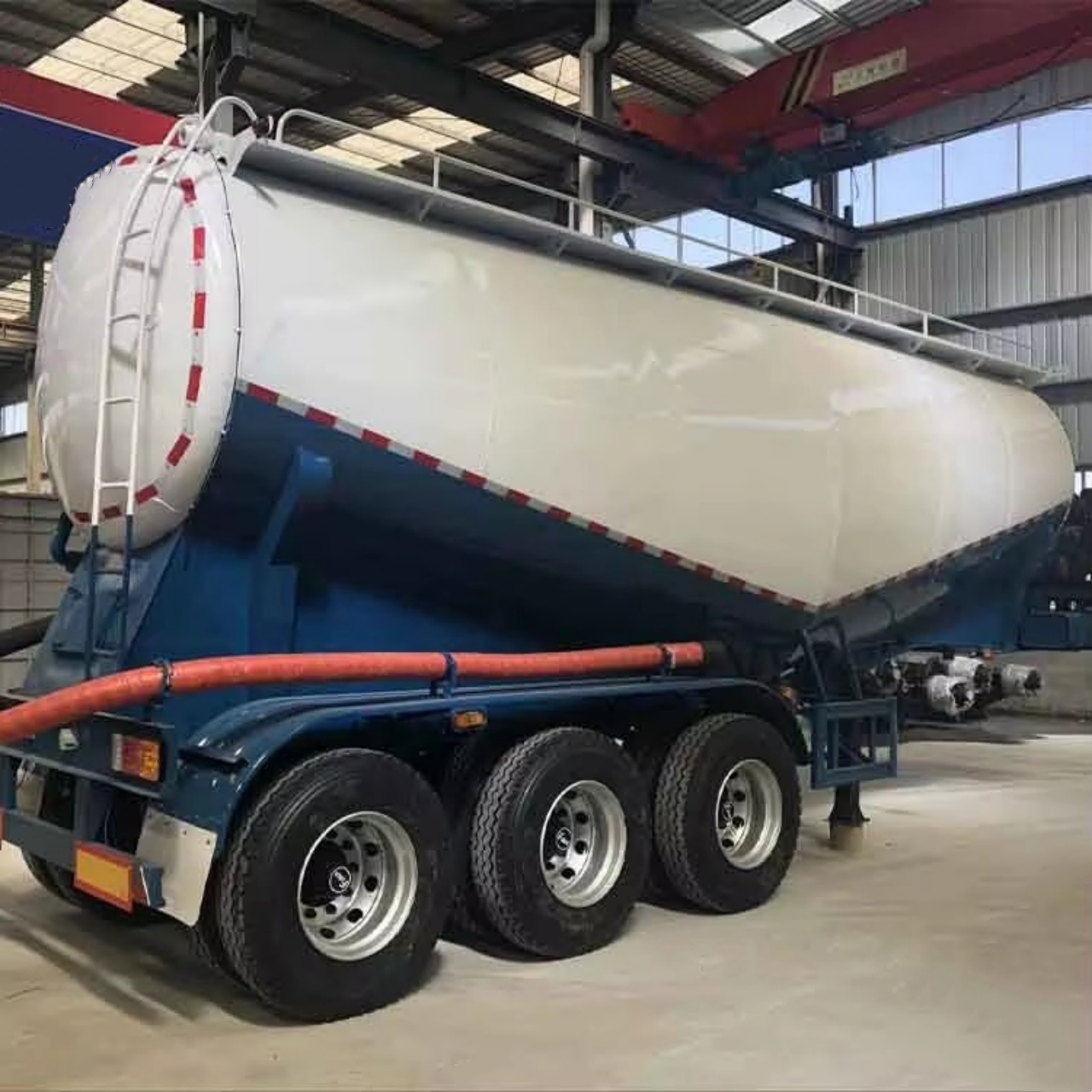
Industries and Applications
Pneumatic trailers are used in various industries where the transportation of dry bulk materials is essential. Some of the common applications include:
1. Construction Industry
- Transporting cement, sand, fly ash, and lime to construction sites and mixing plants.
2. Agricultural Industry
- Moving feed grains, flour, and other dry bulk agricultural products.
3. Plastic and Chemical Industries
- Delivering plastic pellets, resins, and powdered chemicals for manufacturing processes.
4. Food Industry
- Transporting flour, sugar, and other food-grade powders while ensuring hygiene and quality standards.
Challenges and Considerations
While pneumatic trailers are highly efficient, they come with their own set of challenges:
- High Initial Cost: The specialized design and equipment make these trailers more expensive than standard trailers.
- Requires Skilled Operation: Operators need proper training to handle the air pressure system safely and efficiently.
- Maintenance Needs: Regular inspections and maintenance of the compressor, aerators, and valves are required to prevent operational failures.
- Limited Material Compatibility: Some materials, such as large granules or sticky substances, may not be suitable for pneumatic transport.
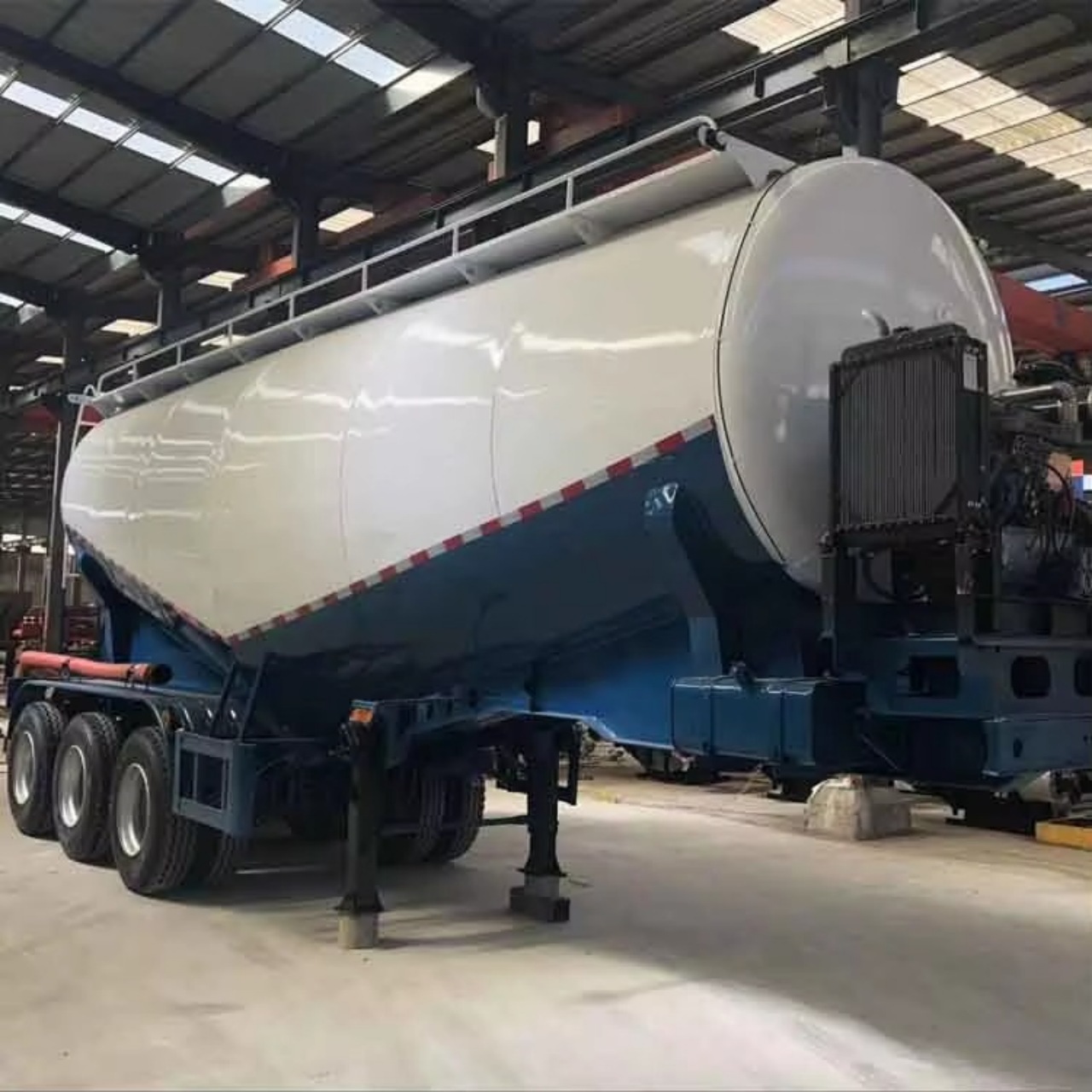
Conclusion
Pneumatic trailers play a crucial role in modern trucking, offering a safe and efficient means of transporting dry bulk materials. Their ability to unload cargo using compressed air makes them invaluable in industries that require contamination-free and moisture-resistant transportation solutions. Although they require a significant investment and skilled operation, their advantages in safety, efficiency, and cost-effectiveness make them a preferred choice for bulk material logistics.
Understanding the workings and applications of pneumatic trailers helps businesses make informed decisions regarding their use, ensuring optimized transportation and handling of bulk goods. As industries continue to evolve, innovations in pneumatic trailer technology will further enhance their efficiency and sustainability, keeping them at the forefront of dry bulk logistics.
